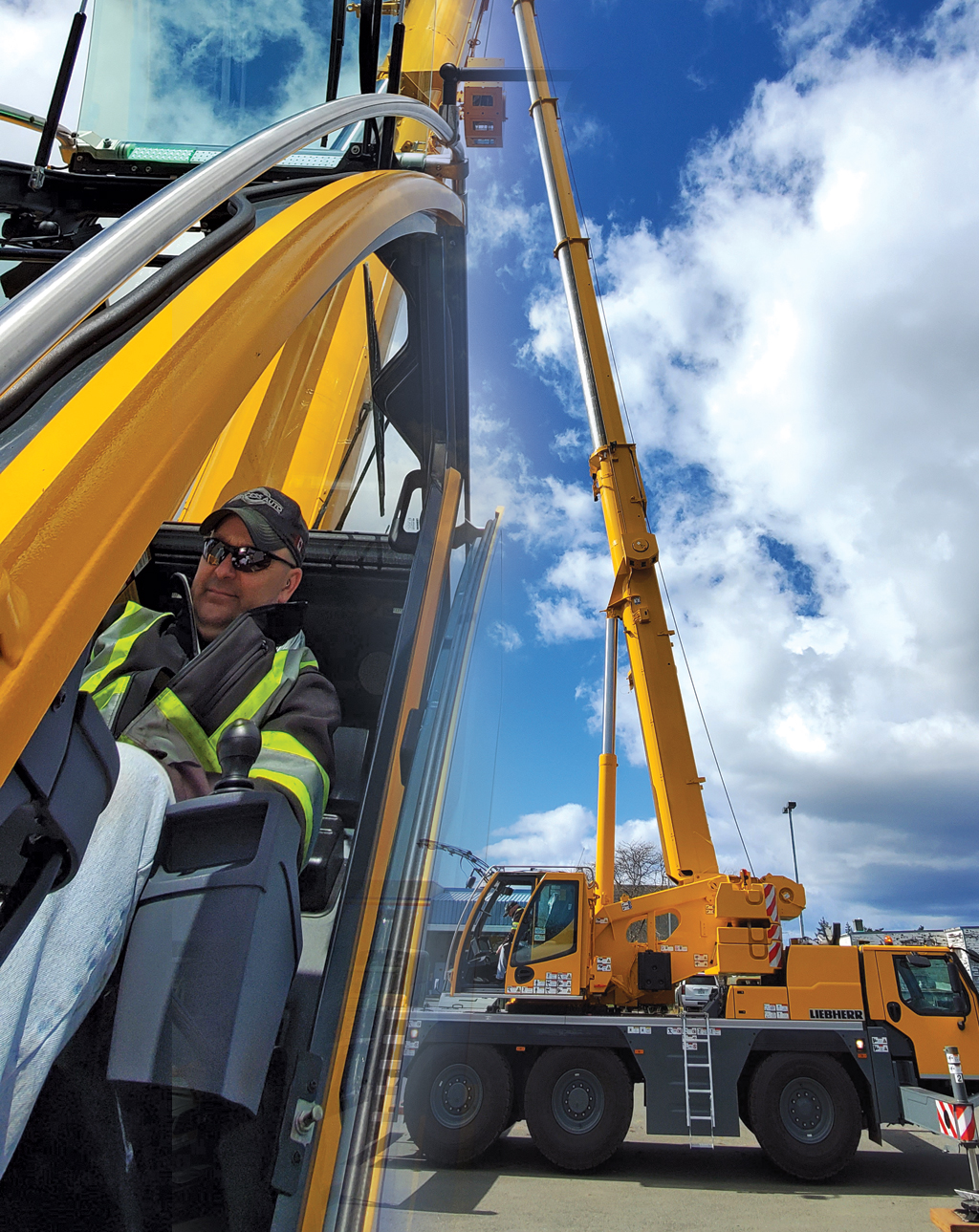Mastering the cranes – new training for new lifting gear
By Lookout on Oct 25, 2020 with Comments 1

Jamie Quinte of Transport Electrical Mechanical Engineering operates one of the department’s new Liebherr cranes. Photo by Chris Shipway
Peter Mallett
Staff Writer
––
Operating a crane of any sort requires in-depth training followed by industry certifications.
So, with the recent delivery of two mobile Liebherr 70-tonne cranes, and another one on its way, driver operators at Transport Electrical Mechanical Engineering (TEME) have to be schooled before getting behind the controls.
Nine level 6 machine driver operators, who work with the Special Purpose Vehicles section at TEME, just completed the required two five-day training sessions delivered by an instructor from the German-based manufacturer Liebherr.
They also received another four-day course for hook-tender certification that was delivered by an instructor from Big Foot Crane Academy located in Abbotsford, B.C.
Next in line for training are 10 TEME employees who work as hook tenders on crane operations.
The new cranes, which are attached to large trucks, will be used for loading and unloading heavy equipment and other materials on and off the trucks and out of warehouses, as well as loading ammunition on warships.
“The training enables our workers to be fully prepared to handle new challenges of loading much heavier and cumbersome equipment required for delivery in the future fleet, including the RCN’s new Arctic and Offshore Patrol Ships,” said Chris Shipway, TEME Supervisor, Special Purpose Vehicles.
The new cranes replace two older intermediate construction-style 35 and 40 tonne cranes that have reached the end of their lifecycle.
The Liebherr Crane has a maximum load capacity of 70 tonnes and a 50-metre telescopic boom coupled with a range of reliable, modern technology.
“Having a larger weight capacity and more manoeuvrability is a huge deal when you are lifting and moving a 5,000 or 6,000 pound item,” says Shipway. “It will enable our crews to reach the other side of a ship when it is alongside without spinning the ship around, improving our efficiency and readiness to support the fleet.”
Two cranes will reside in dockyard and the third will go to Canadian Forces Maritime Experimental Test Range in Nanoose.
Having heavier, larger, and stronger equipment also requires more precautions, says Shipway.
“There is a huge amplification factor with a massive crane, such as safety concerns with the weight of the crane, ground stability, support, and what it is lifting,” he said. “Cranes cannot operate on surfaces that can’t handle their weight and can break and suffer structural failures if health and safety regulations are not followed to a tee.”
Shipway, a former reservist, has worked with the Department of National Defence for 14 years. He oversees all SPV operations with TEME including the movement of cargo and freight, construction equipment and highway tractors, road maintenance equipment, and harbour cleanup equipment.
––––
Filed Under: Top Stories
About the Author:






I’m glad you talked about the importance of safety training for crane operators. Recently, one of my cousins mentioned he’s interested in a career in heavy machinery operations. I believe any type of career path needs a good education process, so I’ll be sure to tell my cousin about that. Thanks for the information on crane operators and their education programs.